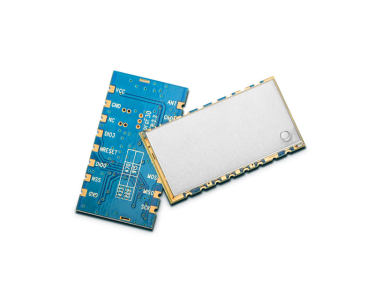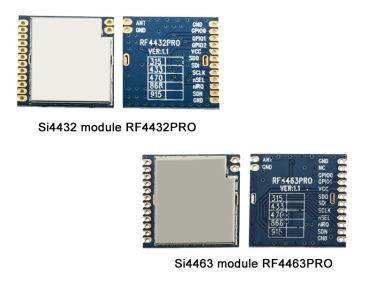Why is the LoRa module closer to the ground, the worse the signal
LoRa is the most popular and widely used low-power wireless communication technology in recent years, and its advantages need not be said more. However, in the process of using the LoRa module, many people have encountered the problem of signal transmission, thinking that the closer the LoRa module is to the ground, the worse the signal, so what is the cause of this situation?
Factors affecting signal transmission of LoRa module
Own factors:
1. Receive sensitivity
The receiving sensitivity has a great influence on the communication distance of the LoRa module, and improving the sensitivity can be based on the LoRa spreading factor (SF) and modulation bandwidth (BW). Large, the lower the sensitivity, the closer the communication distance. Therefore, increasing the spreading factor and reducing the modulation bandwidth can effectively improve the receiving sensitivity of the LoRa module, thereby increasing the communication distance.
2. Transmit power
Transmitting power is also a major factor affecting the LoRa module. The LoRa module supports constant RF power output when the voltage changes from +20dBm to 100mW. Increasing the transmit power can effectively increase the transmission distance of the LoRa module.
3. Antenna gain
The antenna can make the received and transmitted signals of the LoRa module stronger, and the key factor affecting the antenna signal amplification capability is the antenna gain. Increasing the gain of the receiving antenna can greatly increase the transmission distance of the LoRa module.
4. Parameter setting
When using LoRa modules, the parameter settings between modules and between modules and devices need to be consistent, including rate, frequency band, etc., so that communication between LoRa modules can be effectively generated, otherwise there will be garbled characters, data loss, etc., which will affect the LoRa module. signal transmission.
Envirnmental factor:
1. Frequency
We all know that in the process of wireless transmission, the frequency is very important. Within a certain range, the simultaneous transmission of data at the same frequency will affect each other. Therefore, various countries and industries have certain regulations on frequencies, and each module product also has its own frequency band, so we can first check whether there is co-frequency interference, and choose areas with fewer base stations.
2. Power
This is easily overlooked by many people. When the LoRa module is used, a DC regulated current is required. If the current is too small, the power will be insufficient, which will shorten the transmission distance of the LoRa module. If the current is too large, the LoRa module will be burned out. It is best to choose a power supply with anti-interference, small ripple and strong load capacity.
3. Interference source
Metal and many buildings will have a great impact on the signal transmission of the LoRa module, so when using the LoRa module, choose an open area as much as possible, with few high-rise buildings, sparse trees, and an unobstructed environment.
4. Grounding measures
Reliable grounding can reduce noise and other interference to the LoRa module signal, can effectively improve the stability of the equipment, and protect the communication equipment from the damage of electrostatic high voltage and instantaneous discharge pulses. Good grounding enables communication equipment to obtain good shielding effect and avoid external electromagnetic interference.
5. Other environmental factors
For example, the temperature is too high or too low, the weather, frequent moving of equipment, irregular installation, etc., will affect the communication distance of the LoRa module, and many aspects need to be considered when encountering signal transmission problems.
Why is the LoRa module closer to the ground, the worse the signal?
We analyze the above factors that affect the communication distance of the LoRa module. The closer the LoRa module is to the ground, the worse the signal is. The biggest reason is the influence of the antenna on the LoRa module.
The radiation of the antenna is directional, and different types of antennas have different radiation ranges, which can be roughly divided into omnidirectional antennas and directional antennas. The omnidirectional antenna is literally, the signal is radiated to a 360-degree range, while the signal of the directional antenna is to cover the designated area.
The gain radiation range of the antenna is in the shape of a "flat fruit". The higher the gain, the farther the horizontal radiation distance is, but the smaller the vertical radiation range is, so the gain of the antenna is not as high as possible.
This verifies that the LoRa module is close to the ground and the signal becomes weak, which may be caused by not selecting an antenna with a suitable gain. Select a suitable antenna, and then combine the reasons analyzed above to place the device in a location with less environmental impact. The antenna is placed at a high place to increase the coverage of the blind area, thereby increasing the signal transmission distance, reducing the packet loss rate, and improving the communication quality of the LoRa module.
 +86-755-23080616
+86-755-23080616
 sales@nicerf.com
sales@nicerf.com
Website: https://www.nicerf.com/
Address: 309-314, 3/F, Bldg A, Hongdu business building, Zone 43, Baoan Dist, Shenzhen, China




